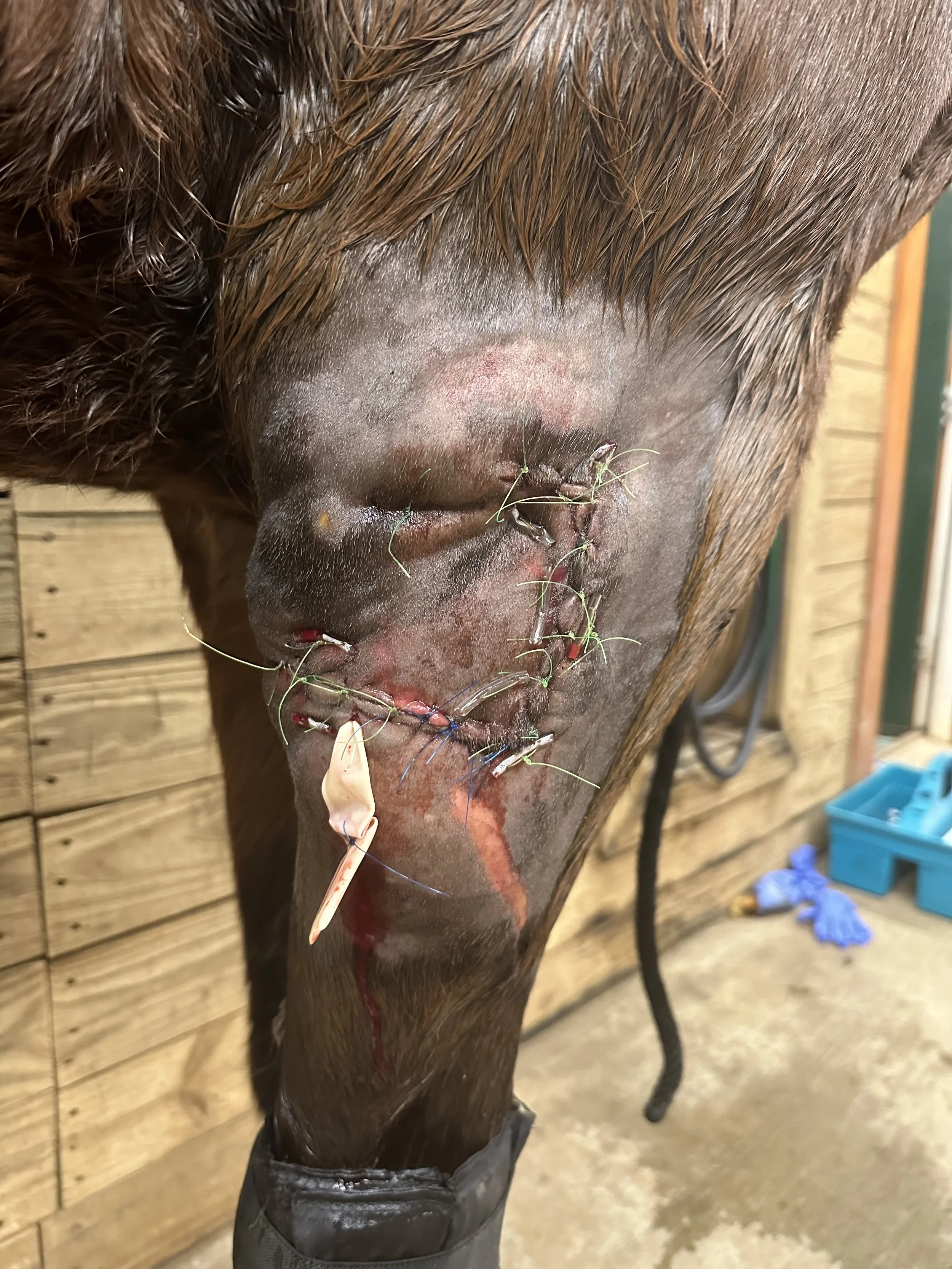Pete is a 15-year-old hunter/jumper who sustained a large “flap" wound over his elbow. This type of wound can be challenging for multiple reasons. The flap of skin is separated from the underlying blood supply and as a result, portions of the skin flap often will die off. This type of wound is more prone to infection as the sutured flap can create pockets perfect for bacteria. The location of this wound over a high motion joint also means the wound will be under extra tension.
Pete’s veterinarian was able to see him quickly to clean and debride the wound bed and to suture the wound margins back together. Tension relieving suture patterns were used to help keep the sutures in place and a drain was placed to decrease fluid pocketing in the wound bed. Pete was started on antibiotics and anti-inflammatories.
Initially Pete was kept strictly stall rested with a double stacked bandage in place to immobilize the limb as much as possible. Keeping Pete mentally healthy during this extreme exercise restriction was an important part of keeping him quiet. He was fed unlimited hay in a hay net with treats hidden throughout the bag for entertainment. He was groomed and given attention multiple times per day. He performed gentle core exercises to keep his brain engaged and his muscles strong.
Without moving him from the stall, Pete’s bandage was changed and the wound was cleaned daily. Class IV laser therapy was used to helping to increase cellular metabolism, to aid in the removal of waste products and to speed the production of new tissue. Lymphatic massage was performed to encourage the recirculation of pooling fluid or swelling within the limb.
Within a few days, drainage from the wound began to increase slightly and Pete’s wound began to show signs of infection. We were able to catch this quickly and adjust his antibiotics. Within a few days, the drainage began to decrease and Pete’s drain was able to be removed. A week later, some of his sutures were removed and a few days after that, the remaining sutures were taken out. Pete healed beautifully and his entire skin flap was preserved!
After 5 weeks of tissue healing, exercise restriction and rehabilitation work, Pete was ready to start under saddle. Our veterinarians guided his owner and monitored Pete through a progressive exercise program. This boy is back to work and you would never know he’d had this injury. We’re so happy to see him doing what he loves again!
Pete: Rehabilitation of a “Flap” Wound
Pete is back to work!
Pete's wound immediately after suture repair. Notice the drain at the bottom of the wound and the stents (small tubes) which help relieve tension.
Pete's wound three weeks later after the last sutures were removed.



